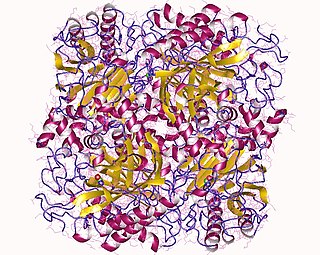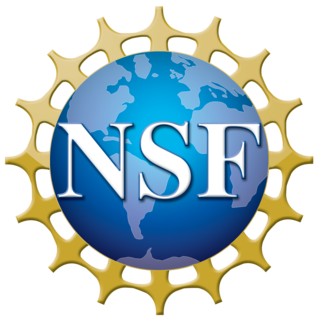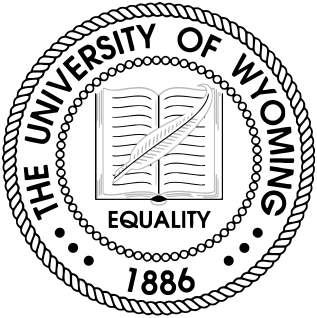Antisense therapy is a form of treatment for genetic disorders or infections. When the genetic sequence of a particular gene is known to cause a particular disease, it is possible to synthesize a strand of nucleic acid that will bind to the messenger RNA (mRNA) produced by that gene and inactivate it, effectively turning that gene "off". This is because mRNA has to be single stranded for it to be translated. Alternatively, the strand might be targeted to bind a splicing site on pre-mRNA and modify the exon content of an mRNA.
Joseph DeRisi is an American biochemist, specializing in molecular biology, parasitology, genomics, virology, and computational biology.
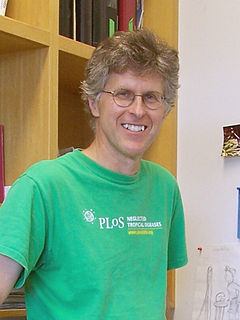
Patrick "Pat" O'Reilly Brown, is chief executive and founder of Impossible Foods Inc. and professor emeritus in the department of biochemistry at Stanford University. Brown is co-founder of the Public Library of Science, inventor of the DNA microarray, and a former investigator at Howard Hughes Medical Institute.
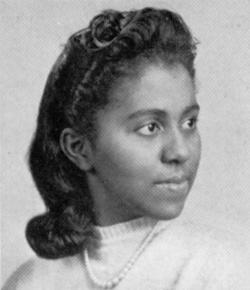
Marie Maynard Daly was an American biochemist. She was the first Black American woman in the United States to earn a Ph.D. in chemistry. Daly made important contributions in four areas of research: the chemistry of histones, protein synthesis, the relationships between cholesterol and hypertension, and creatine's uptake by muscle cells.

Indoleamine-pyrrole 2,3-dioxygenase (IDO or INDO EC 1.13.11.52) is a heme-containing enzyme that in humans is encoded by the IDO1 gene. It is one of three enzymes that catalyze the first and rate-limiting step in the kynurenine pathway, the O2-dependent oxidation of L-tryptophan to N-formylkynurenine, the others being IDO2 and tryptophan 2,3-dioxygenase (TDO).

Nancy Hopkins, an American molecular biologist, is the Amgen, Inc. Professor of Biology at the Massachusetts Institute of Technology. She is a member of the National Academy of Sciences, the Institute of Medicine of the National Academy, and the American Academy of Arts and Sciences. She is known for her research identifying genes required for zebrafish development, and for her earlier research on gene expression in the bacterial virus, lambda, and on mouse RNA tumor viruses. She is also known for her work promoting equality of opportunity for women scientists in academia.
Nahum Sonenberg, is an Israeli Canadian microbiologist and biochemist. He is a James McGill professor of biochemistry at McGill University in Montreal, Quebec, Canada. He was an HHMI international research scholar from 1997 to 2011 and is now a senior international research scholar. He is best known for his seminal contributions to our understanding of translation, and notable for the discovery of the mRNA 5' cap-binding protein, eIF4E, the rate-limiting component of the eukaryotic translation apparatus.
Emeagwali is a surname. Notable people with the surname include:
Peter Michael Waterhouse is a British-Australian plant virologist and geneticist. He is a professor at the Queensland University of Technology.

Professor Jane Visvader is a scientist specialising in breast cancer research who works for the Walter and Eliza Hall Institute in Melbourne, Australia. She is the joint head of the Breast Cancer Laboratory with Professor Geoff Lindeman. In 2008, Jane Visvader was a joint recipient of the GlaxoSmithKline Award for Research Excellence for outstanding contribution to Breast Cancer research. Professor Visvader was made a fellow of the Australian Academy of Science in 2012. Professor Visvader's most recent award is the 2014 Royal Society of Victoria Research Medal for Scientific Excellence in Biomedical & Health Sciences.
Aleksandra Filipovska is a Senior Research Fellow at the University of Western Australia, heading a research group at the Harry Perkins Institute of Medical Research. Specializing in biochemistry and molecular biology, she has made contributions to the understanding of human mitochondrial genetics in health and disease.
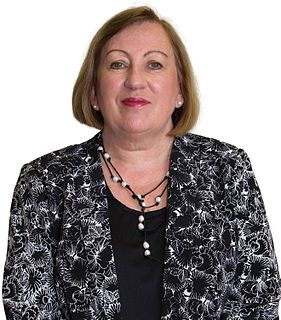
Jennifer Stow is deputy director (research), NHMRC Principal Research Fellow and head of the Protein Trafficking and Inflammation laboratory at the Institute for Molecular Bioscience (IMB), The University of Queensland, Australia. She was awarded her PhD at Monash University in Melbourne in 1982. As a Fogarty International Fellow, she completed postdoctoral training at Yale University School of Medicine (US) in the Department of Cell Biology. She was then appointed to her first faculty position as an assistant professor at Harvard University in the Renal Unit, Departments of Medicine and Pathology at the Massachusetts General Hospital in Boston. At the end of 1994 she returned to Australia as a Wellcome Trust Senior International Medical Research fellow at The University of Queensland where her work has continued. Stow sits on national and international peer review and scientific committees and advisory boards. She has served as head of IMB's Division of Molecular Cell Biology, and in 2008 she was appointed as deputy director (research).
Susan Wente is a cell biologist who currently holds the position of Provost and Vice Chancellor for Academic Affairs at Vanderbilt University.
Harold M. "Hal" Weintraub was an American scientist who lived from 1945 until his death in 1995 from an aggressive brain tumor. Only 49 years old, Weintraub left behind a legacy of research.
Mary Katharine Levinge Collins is a British Professor of Immunology. She is Dean of Research at the Okinawa Institute of Science and Technology in Japan. Formerly, Collins taught in the Division of Infection and Immunity at University College London, and was the head of the Division of Advanced Therapies at the National Institute for Biological Standards and Control, and the Director of the Medical Research Council Centre for Medical Molecular Virology. Her research group studies the use of viruses as vectors for introducing new genes into cells, which can be useful for experimental cell biology, for clinical applications such as gene therapy, and as cancer vaccines.
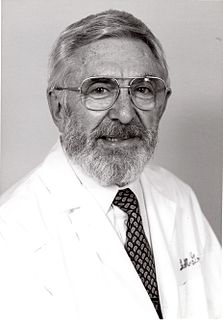
Maurice Green was an American virologist whose research career has spanned more than six decades. He is regarded as a pioneer in the study of animal viruses, in particular their role in cancer. Green founded the Institute of Molecular Virology at St. Louis University School of Medicine in the late 1950s, and has since served as its Chairman.
Karen Beemon is an American molecular biologist whose research focuses primarily on viruses, RNA, and the genetic causes of cancer. She determined the size of retroviral genomes as a graduate student and subsequently helped characterize the Src oncogene of Rous sarcoma virus, the first tyrosine kinase. Her work on retroviral RNA processing has included mapping m6A modification sites in retrovirus genomes and determining a consensus sequence (RGACU). She also identified a Negative Regulator of Splicing sequence and an RNA-stability element that prevents nonsense-mediated decay of viral and cellular RNAs. Recently, Beemon identified tumor-promoting genes whose expression is altered by integration of the Avial Leukosis Virus (ALV) into the genome, such as the telomerase catalytic subunit, TERT.

Don W. Cleveland is an American cancer biologist and neurobiologist.
Streptomyces parvulus is a bacterium species from the genus of Streptomyces which has been isolated from soil. Streptomyces parvulus produces the peptide antibiotic Actinomycin D and the angiogenesis inhibitor borrelidin and manumycin A, himalomycin A, himalomycin B and kynurenine.
Marion Sewer (1972-2016) was a pharmacologist and professor at the University of California, San Diego's Skaggs School of Pharmacy and Pharmaceutical Sciences known for her research on steroid hormone biogenesis and her commitment to increasing diversity in science. Much of her research centered around cytochrome P450, a family of enzymes involved in the conversion of cholesterol into steroid hormones. She died unexpectedly at the age of 43 from a pulmonary embolism on January 28, 2016 while traveling through the Detroit airport.

